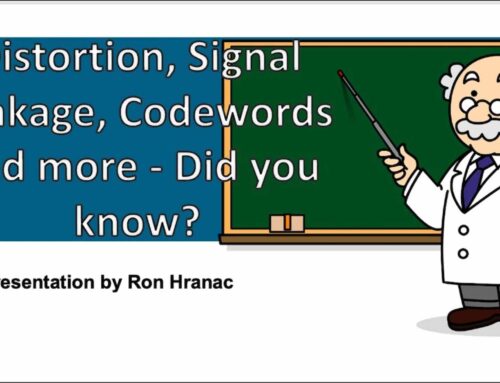Show Me The Money! Remote-PHY and Full Duplex DOCSIS
Doesn’t the cable industry just love initialisms and acronyms? Just as you thought you were getting your mind around DOCSIS 3.1 the industry continues to move forward and drop a bunch more terms like remote-PHY (R-PHY) and full duplex (FDX) DOCSIS. I like soup, but we need a decoder ring for the alphabet soup we are eating. Don’t get me wrong, this is great stuff and awesome technology. CableLabs recently updated the DOCSIS 3.1 PHY specification to include FDX.
But this article is not about about FDX, instead it focuses on a key enabler of FDX, which is Remote-PHY. Without R- PHY, FDX would be — well rather a non-starter due to diplex filters and analog optics — all of which R-PHY handily makes go away. This article focuses on Remote-PHY, its benefits and how it works. FDX DOCSIS leverages R- PHY to achieve 10 Gbps symmetrical speeds in the HFC plant. One technology builds upon the other, so it is important that we lay the foundation of R-PHY so that everyone is on the same page.
Why Remote-PHY
Before we talk about how R-PHY works, we should first understand why R-PHY is beneficial and even something worth looking at. In today’s DOCSIS and video networks, all data signals — be they data or video — originate at the headend as Internet Protocol (IP) traffic. IP data traffic is sent into a CMTS and converted into QAM channels while IP video traffic is sent into a quadrature amplitude modulation (QAM) modulator. In the case of a converged cable access platform (CCAP)-enabled device, both IP data and video traffic can be sent to the CCAP and both are transformed into their respective single carrier (SC)-QAM signals or possibly DOCSIS 3.1 orthogonal frequency division multiplexed (OFDM) signals. In both cases these are RF signals and can be distributed on the HFC plant by analog optical transmitters and receivers to a fiber node somewhere far away.
IP data from the subscribers is returned to the CMTS or CCAP as RF signals on the upstream. The upstream RF signals from the coax plant are received at the node and transmitted to the headend or hub where they are converted back to IP data and sent on its way to the Internet.
Notice how frequently the IP data has passed through analog optical systems. I’ve penned many articles and podcasts where I discussed how the upstream and in particular the return path optical transmitter is the “Achilles Heel” of the DOCSIS network. Return path transmitters cause many non-linear distortions, the most notable of which is laser clipping due to too much RF power at the input of the optical transmitter. These problems only get worse as we add more upstream signals driven by more data demands by our subscribers. The downstream will have the same problem as we expand our RF spectrum to 1.2 GHz and beyond to support more data requirements, not to mention the complexities of headend cabling and combining required.
Wouldn’t it be great to completely eliminate analog optics altogether? This is possible with Remote-PHY. In addition R-PHY pushes all-IP to the fiber node (data and video). It is at the fiber node where IP is converted to SC-QAM or OFDM signals — very high quality signals in fact. Similarly, upstream data from the subscribers is converted from RF to IP for transport back to the headend. No more analog! But how is it done?
How Remote-PHY Works
The architecture for remote PHY is defined with a modular CMTS as shown in Figure 1. This is pulled from the CableLabs CM-SP-R-PHY-I08-170908 R-PHY specification, section 5.3.1 and will be referenced throughout this article.
Read more by Brady Volpe for Broadband Library. Also watch or listen to our podcasts on Remote-PHY.






Leave a Reply